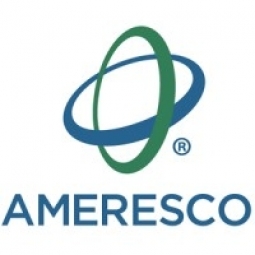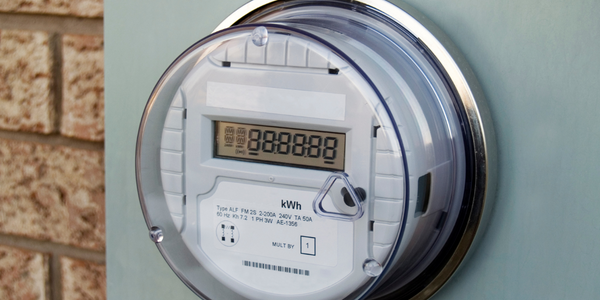Integrated Microgrid Revolutionizes Energy Consumption at California Fresh Vegetable Production Facility

Technology Category
- Infrastructure as a Service (IaaS) - Cloud Storage Services
- Other - Battery
Applicable Industries
- Electrical Grids
- Renewable Energy
Applicable Functions
- Facility Management
Use Cases
- Energy Storage Management
- Microgrid
Services
- System Integration
About The Customer
Taylor Farms is North America’s largest producer of healthy fresh foods. The company operates a 450,000 sq. ft. facility in San Juan Bautista, CA, which requires a constant power supply to ensure uninterrupted production and delivery of fresh foods to customers. Taylor Farms is committed to providing healthy fresh foods to its customers and is keen on reducing its greenhouse gas emissions. The company was facing energy reliability challenges and escalating energy prices, which threatened its operations and commitment to customers. By installing an integrated microgrid, Taylor Farms is able to take control of its energy needs and establish price and power predictability.
The Challenge
Taylor Farms, North America’s largest producer of healthy fresh foods, was facing energy reliability challenges and escalating energy prices. The company was reliant on the regional power grid to power its 450,000 sq. ft. facility in San Juan Bautista, CA. The facility required a constant power supply to ensure uninterrupted production and delivery of fresh foods to customers. However, the regional power grid was strained and unreliable, often impacted by extreme weather events. This situation posed a significant risk to Taylor Farms' operations, potentially disrupting its commitment to providing fresh foods to customers. Furthermore, the company was keen on reducing its greenhouse gas emissions and establishing price and power predictability.
The Solution
To address these challenges, Taylor Farms partnered with Ameresco, Bloom Energy, and Concept Clean Energy to install an integrated microgrid at its San Juan Bautista facility. This microgrid was designed to take the facility completely off the traditional energy grid, ensuring a reliable and constant power supply. The microgrid combines Ameresco’s 2 MW / 4 MWh battery energy storage system, 6 MW of Bloom fuel cells, and 2 MW of solar power from Concept Clean Energy. This combination of technologies ensures a resilient, always-on power supply, with reliable daytime power generation from solar. The microgrid also provides security during periods of energy capacity shortfall, further enhancing the reliability of the power supply. This solution allows Taylor Farms to take control of their energy needs and establish price and power predictability.
Operational Impact
Quantitative Benefit

Case Study missing?
Start adding your own!
Register with your work email and create a new case study profile for your business.
Related Case Studies.

Case Study
Remote Monitoring & Predictive Maintenance App for a Solar Energy System
The maintenance & tracking of various modules was an overhead for the customer due to the huge labor costs involved. Being an advanced solar solutions provider, they wanted to ensure early detection of issues and provide the best-in-class customer experience. Hence they wanted to automate the whole process.

Case Study
Vestas: Turning Climate into Capital with Big Data
Making wind a reliable source of energy depends greatly on the placement of the wind turbines used to produce electricity. Turbulence is a significant factor as it strains turbine components, making them more likely to fail. Vestas wanted to pinpoint the optimal location for wind turbines to maximize power generation and reduce energy costs.

Case Study
Siemens Wind Power
Wind provides clean, renewable energy. The core concept is simple: wind turbines spin blades to generate power. However, today's systems are anything but simple. Modern wind turbines have blades that sweep a 120 meter circle, cost more than 1 million dollars and generate multiple megawatts of power. Each turbine may include up to 1,000 sensors and actuators – integrating strain gages, bearing monitors and power conditioning technology. The turbine can control blade speed and power generation by altering the blade pitch and power extraction. Controlling the turbine is a sophisticated job requiring many cooperating processors closing high-speed loops and implementing intelligent monitoring and optimization algorithms. But the real challenge is integrating these turbines so that they work together. A wind farm may include hundreds of turbines. They are often installed in difficult-to-access locations at sea. The farm must implement a fundamentally and truly distributed control system. Like all power systems, the goal of the farm is to match generation to load. A farm with hundreds of turbines must optimize that load by balancing the loading and generation across a wide geography. Wind, of course, is dynamic. Almost every picture of a wind farm shows a calm sea and a setting sun. But things get challenging when a storm goes through the wind farm. In a storm, the control system must decide how to take energy out of gusts to generate constant power. It must intelligently balance load across many turbines. And a critical consideration is the loading and potential damage to a half-billion-dollar installed asset. This is no environment for a slow or undependable control system. Reliability and performance are crucial.

Case Study
Remote Monitoring and Control for a Windmill Generator
As concerns over global warming continue to grow, green technologies are becoming increasingly popular. Wind turbine companies provide an excellent alternative to burning fossil fuels by harnessing kinetic energy from the wind and converting it into electricity. A typical wind farm may include over 80 wind turbines so efficient and reliable networks to manage and control these installations are imperative. Each wind turbine includes a generator and a variety of serial components such as a water cooler, high voltage transformer, ultrasonic wind sensors, yaw gear, blade bearing, pitch cylinder, and hub controller. All of these components are controlled by a PLC and communicate with the ground host. Due to the total integration of these devices into an Ethernet network, one of our customers in the wind turbine industry needed a serial-to-Ethernet solution that can operate reliably for years without interruption.

Case Study
Temperature monitoring for vaccine fridges
Dulas wanted a way to improve the reliability of the cold chain, facilitating maintenance and ensuring fewer vaccines are spoiled. Dulas wanted an M2M solution which would enable them to record and report the temperature inside vaccine refrigerators.

Case Study
Hydro One Leads the Way In Smart Meter Development
In 2010, Ontario’s energy board mandated that time-of-use (TOU) pricing for consumers be available for all consumers on a regulated price plan. To meet this requirement, Hydro One needed to quickly deploy a smart meter and intelligent communications network solution to meet the provincial government’s requirement at a low cost. The network needed to cover Hydro One’s expansive service territory, which has a land mass twice the size of Texas, and its customers live in a mix of urban, rural, and remote areas, some places only accessible by air, rail, boat or snowmobile. Most importantly, the network needed to enable future enterprise-wide business efficiencies, modernization of distribution infrastructure and enhanced customer service. To meet these needs, Hydro One conceptualized an end-to-end solution leveraging open standards and Internet Protocols (IP) at all communication levels. The utility drew upon industry leaders like Trilliant to realize this vision.






